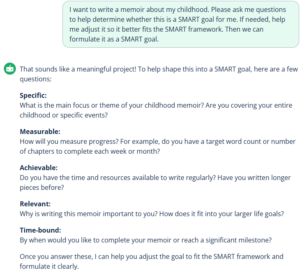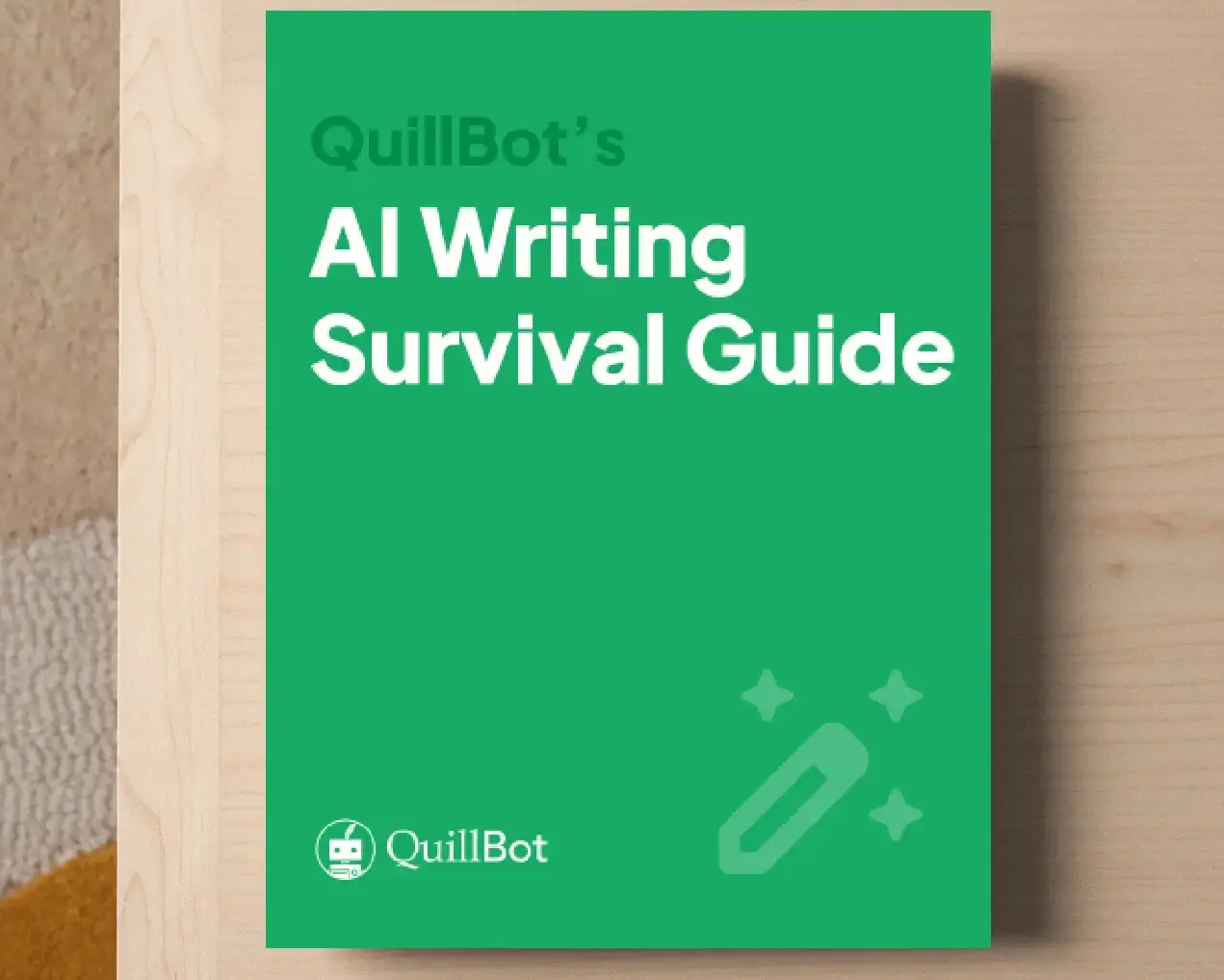How to Use an AI SMART Goal Generator
Applying the SMART criteria can help you set goals that are focused and realistic, giving you a better chance of following through on your intentions. Using an AI SMART goal generator, like QuillBot’s free SMART goal generator, will help you formulate a goal that checks all of the boxes—specific, measurable, achievable, relevant, and time-bound.
How to write a SMART goal
Writing down a goal can be a great first step on the way to achieving it. And defining it clearly as a SMART goal can bring valuable structure and focus to your efforts. Here’s a short breakdown of the SMART criteria.
1. Specific
Spell out your goal in concrete terms: what you want to accomplish, who’s involved, why it matters, and how you plan to do it. For example, instead of saying, “I want to write a memoir,” you might add more detail: “I want to write three sample chapters of a memoir about my childhood to share with my writing group for feedback. This will help me preserve family stories for future generations.”
2. Measurable
How will you track your progress? Think in terms of quantity, frequency, or clear milestones that show you’re moving forward. For the memoir example, you might say, “I’ll write in three-hour sessions, three times a week, and aim to finish one chapter every five weeks.”
3. Achievable
Make sure your goal is realistic and aligned with your current resources, skills, and commitments. If you’ve never tried to write a book before or have very limited time, completing draft chapters is a more achievable goal than a finished book, for instance—breaking an ambitious goal down into smaller steps can make it feel more manageable.
4. Relevant
A goal that connects with your personal or professional priorities will feel more meaningful and help keep you motivated. A childhood memoir might be a relevant SMART goal if you’re semi-retired, have time to reflect, and enjoy sharing family stories with your grandkids. It may feel less relevant or feasible, however, if you’re juggling a demanding job and parenting young children.
5. Time-bound
Set a clear deadline and include interim targets if it’s a long-term goal. A well-formulated SMART goal for the memoir example might read, “I want to write three sample chapters of a memoir about my childhood to share with my writing group by the end of September. This will help me preserve family stories for future generations. I’ll write for three hours, three times a week, and aim to complete one chapter every five weeks.”
Using an AI SMART goal generator
Start by describing your goal to the AI SMART goal generator, and ask it to walk you through each part of the SMART framework. Prompt it to ask clarifying questions about each criterion—specific, measurable, achievable, relevant, and time-bound. You may need to adjust your goal to better fit the framework; perhaps it’s too ambitious, and you need to break it down into smaller steps, starting with the first step as your current SMART goal.
Once you’ve established that your goal aligns with the SMART criteria, ask the generator to formulate it as a short statement. Read the output carefully, and ask for revisions until you have a clearly defined goal that will help guide you toward the desired outcome.
Frequently asked questions about AI SMART goal generators
- What is a SMART goal?
-
A SMART goal is specific, measurable, achievable, relevant, and time-bound. By applying these criteria, your goal is more likely to be realistic, meaningful, and clearly defined—making it easier to track progress and stay on course.
Use QuillBot’s free SMART goal generator to help you apply the SMART goals criteria during your goal-setting process.
- What should I include in a prompt for a SMART goal generator?
-
In your initial prompt for a SMART goal generator, such as QuillBot’s SMART goals generator, describe your goal and request that the chatbot ask you follow-up questions to determine whether the goal fits the SMART goal framework or whether it requires adjustment.
Next, make any adjustments in conversation with the AI before asking it to formulate the SMART goal as a brief statement.
Cite this Quillbot article
We encourage the use of reliable sources in all types of writing. You can copy and paste the citation or click the "Cite this article" button to automatically add it to our free Citation Generator.
QuillBot. (2025, September 07). How to Use an AI SMART Goal Generator. Quillbot. Retrieved November 5, 2025, from https://quillbot.com/blog/ai-writing-tools/how-to-use-an-ai-smart-goal-generator/


